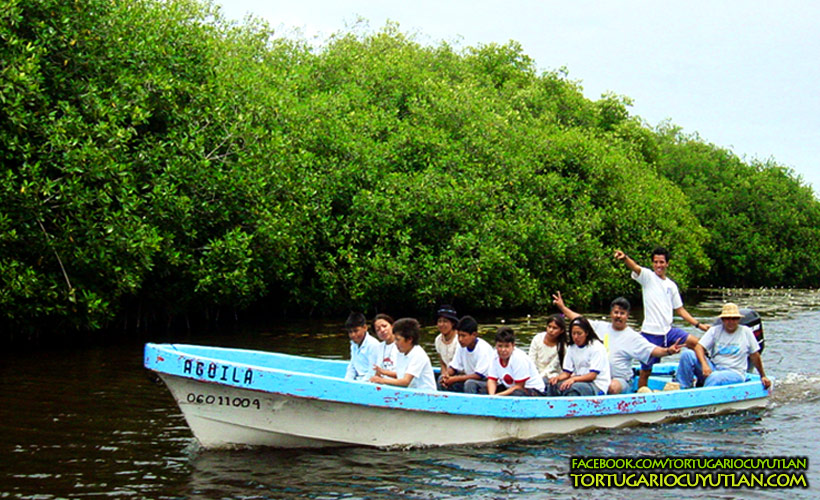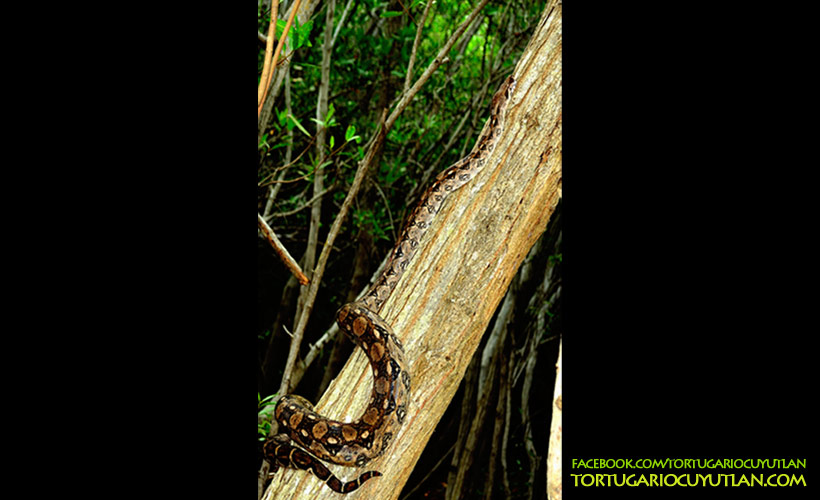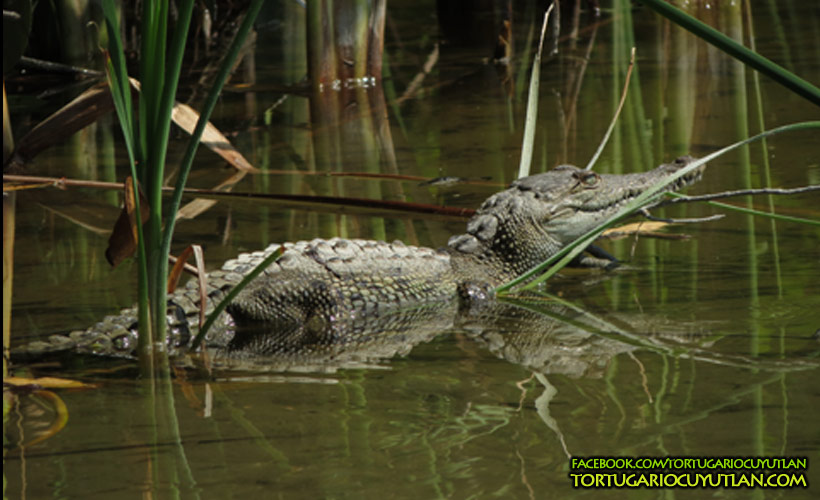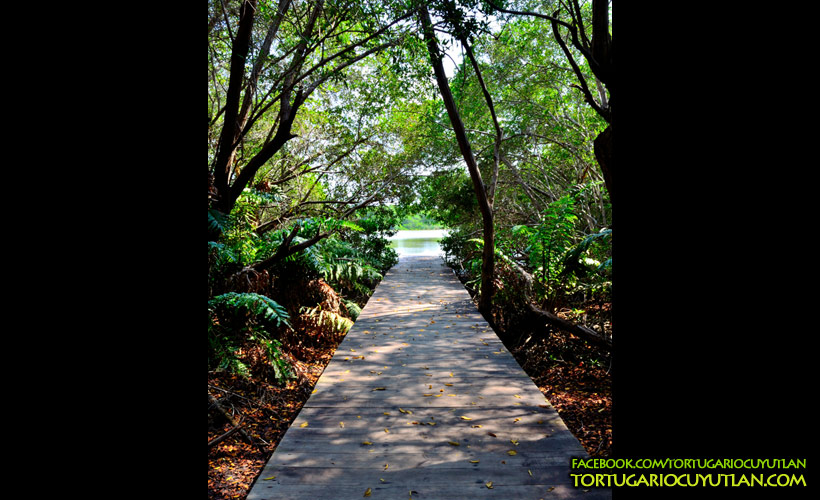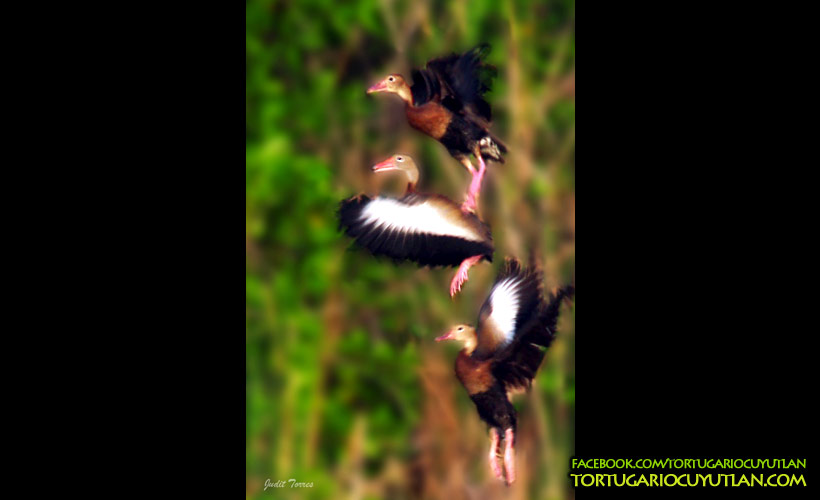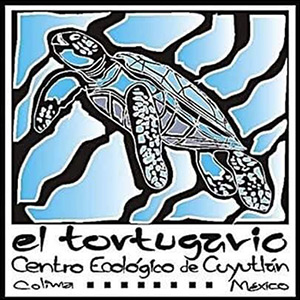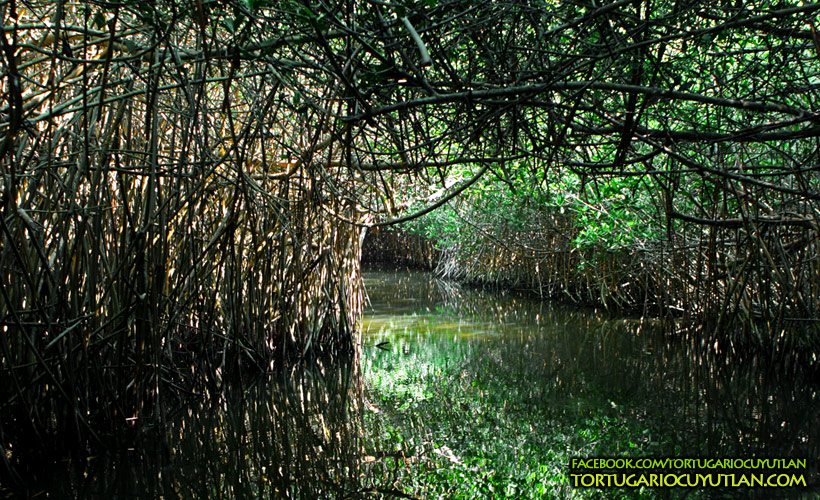
¿Qué son los Manglares?
Los manglares son ecosistemas cuya vegetación es mayoritariamente árboles de mangle. Estos árboles son muy peculiares, puesto que pueden vivir en terrenos inundados de agua salada. Los manglares son fundamentales para el desarrollo de muchos animales, como por ejemplo los peces, porque les dan la protección que el mar abierto no puede darles. Además, a nosotros los seres humanos, nos proporcionan una gran cantidad de valiosos servicios ambientales: son barreras naturales frente a huracanes e inundaciones, controlan la erosión de las costas y filtran el agua mejorando su calidad, entre otros.
Sin embargo, estos importantes árboles están amenazados. El ecosistema de manglares frágil y su equilibrio peligra debido a actividades humanas como la tala del mangle, la contaminación de las aguas donde vive o la fragmentación del hábitat. Afortunadamente, en México existe una ley que los protege, sancionando a todo aquel que tale un árbol de mangle.
En el Estero Palo Verde viven tres especies de árboles de mangle: el mangle blanco, el rojo y el negro. Debido a su importancia ecológica, en 2011 se declaró (junto con otras partes de la Laguna de Cuyutlán) como sitio RAMSAR, es decir, HUMEDAL DE IMPORTANCIA INTERNACIONAL, a 8,600 hectáreas de mangle.
Para un efecto de conservación, el Centro Ecológico de Cuyutlán creó un proyecto de paseos en lancha por el Estero Palo Verde, promoviendo la concientización hacia la conservación de este ecosistema mediante la contemplación de la belleza de este paisaje, así como la instalación de un vivero comunitario con la capacidad de producir 100,000 plantas para la reforestación de las áreas afectadas.
QUE OFRECE EL PASEO EN LANCHA:
- Avistamiento de aves
- Avistamiento de herpetofauna (cocodrilos, serpientes)
- Recorrido por un tramo del túnel de mangle
- Contemplación de las islas del Estero Palo Verde
DURACIÓN DEL PASEO: 45 minutos
RECOMENDACIÓNES:
- No saque las manos fuera de la lancha
- No se permite tomar ninguna especie de flora o fauna y/o parte de ellas durante el recorrido
- No molestar ni tocar a los animales
- No tirar basura al estero
- Se prohíbe nadar en el Estero ya que las condiciones de éste no son adecuadas
- No introducir bebidas alcohólicas ni alimentos
- No introducir aparatos de sonido
Lanchas equipadas con salvavidas, botiquín de primeros auxilios, extinguidor y radio de comunicación.
What are Mangroves?
Mangroves are ecosystems whose vegetation is mostly mangrove trees. These trees are very peculiar, since they can live in salt water flooded land. Mangroves are essential to the development of many animals, such as fish, because it gives the protection the open sea can not give.
Furthermore, it provides us a lot of valuable environmental services: are natural barriers against hurricanes and floods, controlling coastal erosion and filter water improving its quality, among others. However, these important trees are threatened. The mangrove ecosystem is fragile and its balance is endangered by human activities such as logging mangrove or water pollution. Fortunately, in Mexico there is a law that protects them, punishing whoever felling a mangrove tree.
In the Palo Verde Estuary there are three species of mangrove trees: white, red and black mangrove. Because of its ecological importance, in 2011 it was declared (along with other parts of Laguna Cuyutlán) as a RAMSAR site, WETLANDS OF INTERNATIONAL IMPORTANCE.
For a conservation effect, the Ecology Center created a project of boat rides through the Palo Verde Estuary, promoting awareness towards the conservation of this ecosystem through contemplation of the beauty of this landscape.
THE BOAT RIDE OFFERS:
- Bird watching
- Watching herpetofauna (crocodiles, snakes)
- Tour a stretch of mangrove tunnel
- Contemplation of the Palo Verde Islands Estero
DURATION OF THE RIDE: 45 minutes
RECOMMENDATIONS:
- Do not take your hands off the boat
- Not allowed to take any species of flora or fauna and / or parts of them during the tour
- Do not disturb or touch the animals
- Do not litter the estuary
- It is forbidden to swim in the estuary since it conditions are not suitable
- Do not place beverages or food
- No sound input devices
The boats are equipped with lifeguard, first aid kit, fire extinguisher and radio communication.

